Neurofibromas are tumors of the peripheral nerves that are found most commonly in people with neurofibromatosis type I (NF1), a neurogenetic disease with an estimated birth incidence of 1/2500-3000. A type of neurofibroma called a plexiform neurofibroma (pNF) affects up to 50% of people with NF1. These tumors can cause weakness, sensory changes, deformity, pain and of particularly notable concern, can convert to a deadly sarcoma called malignant peripheral nerve sheath tumor (MPNST). While progress has been made in improving our understanding of pNF, there are still a number of gaps that have hindered the development of therapies for NF1 and the tumors associated with NF1 mutations. A group of researchers from the Germans Trias i Pujol Research Institute (IGTP) in Badalona (Barcelona), Spain, in collaboration with researchers from the Center for Regenerative Medicine in Barcelona (CMR[B]), are the first to have reprogrammed pNF-derived NF1(-/-) cells into induced pluripotent stem cells (iPSCs) in order to address these gaps.
Stem cells are cells early in their development before they have ‘been assigned’ a specific purpose (e.g. red blood cells to carry oxygen, white blood cells to fight infection). Treatment of human cells with specific gene-carrying vectors (e.g. retroviruses, Sendai virus) can reprogram the cells back into stem cells which can then be turned into (or differentiated into) all of the cell types in the human body. Fibroblasts from the skin are the typical source of cells used for reprogramming, but in this novel work cells composing pNFs were converted into pluripotent cells in order to maintain their genomic status. These iPSCs were then differentiated back into cells of the Schwann cell lineage and were shown to retain the genetic background and proliferation properties of the original pNF-forming Schwann cells. These are the first iPSCs (including both NF1-/- and NF1+/- pairs) to be generated from a tumor predisposition syndrome-related benign tumor. This is a critical accomplishment as it creates a non-perishable source of cells not generally available for slow growing tumors that can be used in experiments requiring large amounts of cells such as drug screening studies. Moreover the versatile nature of iPSCs enable biological studies and drug testing at different stages of cellular development; ultimately improving our understanding of the relative contribution of each cell type to tumorigenesis and the effects of a drug treatment at each step of disease development. The pNF-derived iPSCs (named as 3PNF_FiPSsv_PM_2, 3PNF_SiPSsv_MM_11, 5PNF_TDiPSsv_MM_4, 5PNF_TDiPSsv_PM_6, 6PNF_SiPSrv_PM_2, and 7PNF_SiPSrv_PM_12) have been banked in the Barcelona node of the Spanish National Cell Bank (Banco Nacional de Lineas Celulares), located at CMR[B] facilities, and are now available to the international research community. In addition, genomic data generated for characterizing these cells with comparison to their primary donor pNF cells is openly available through the NF Data Portal managed by Sage Bionetworks (www.sagebionetworks.org). The intention of making these cells and data resources openly available to the global research community is to foster use by scientists from a range of backgrounds with the ultimate goal of preventing the effects of tumor progression for patients living with NF1 and any associated condition (including several common cancers that carry NF1 mutations such as lung cancer, breast cancer, melanoma and gliomas).
This work was a major cell culture initiative of the Neurofibromatosis Therapeutic Acceleration Program (NTAP). The goals of the initiative were to explore the degree of genomic, molecular and cellular variation within pNF and create a non-perishable source of cells to model NF1 pathogenesis and be compatible with drug-screening analyses for the identification of new therapeutics for pNF.
The Neurofibromatosis Therapeutic Acceleration Program (NTAP) is a research organization founded within the Johns Hopkins University School of Medicine to accelerate development of therapies for Neurofibromatosis Type 1 associated plexiform neurofibromas (pNFs) and cutaneous neurofibromas (cNFs). Since its inception in 2012, more than 50 investigators at 20 institutions across the globe have received NTAP funding for pNF and cNF research. NTAP’s major goals are to: identify the most promising opportunities to develop effective therapies for pNF and cNF; attract new investigators to the NF field; deliver the critical support, resources, and directives to accelerate the research process; and remove obstacles to ensure patients benefit from research advances as quickly as possible. To learn more, please visit: www.n-tap.org.
The Johns Hopkins University, and the Germans Trias i Pujol Research Institute (IGTP) (http://www.germanstrias.org/) are academic institutions based respectively in Baltimore, Maryland, and Badalona (Barcelona), Spain.
The Center of Regenerative Medicine in Barcelona (CMR[B]) (www.cmrb.eu) is a public research centre (non-profit foundation) based in Barcelona, Spain. The overall mission of the CMR[B] is to conduct fundamental research of excellence for the advancement in the clinical translation of regenerative medicine strategies based in pluripotent stem cells, mainly in the context of heart failure, neurodegenerative diseases, non-malignant hematological diseases and age-related macular degeneration.
Sage Bionetworks is a nonprofit biomedical research and technology development organization that was founded in Seattle in 2009. Our mission is to develop and apply principles of open science that support reliable scientific outcomes from data-driven research to improve human health. Our interdisciplinary team of scientists and engineers work together to provide researchers access to technology tools and scientific approaches to share data, benchmark methods, and explore collective insights, all backed by Sage’s gold-standard governance protocols and commitment to user-centered design. Sage is supported through a portfolio of competitive research grants, commercial partnerships, and philanthropic contributions. Learn more at www.sagebionetworks.org.
